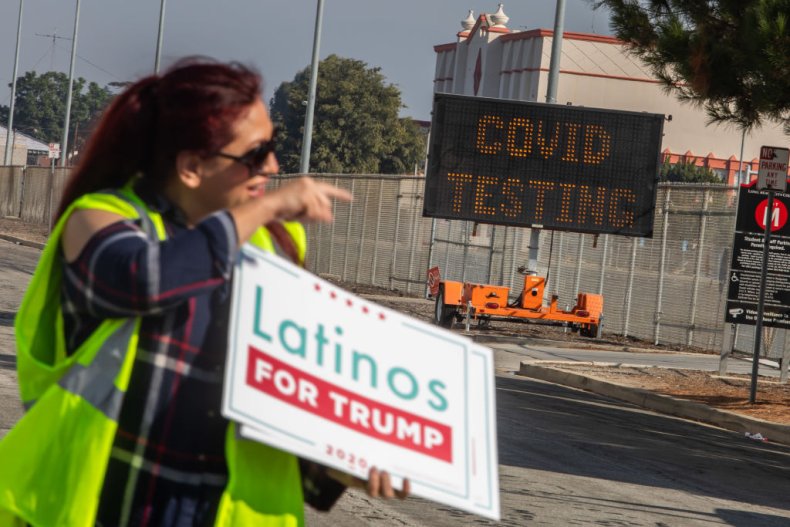
In January 2020, at one of the first mega-rallies at the start of the year’s presidential campaigning, Donald Trump addressed the faithful of the El Rey Jesus church in Miami. The location was not chosen at random. This evangelical church is majority Latino, a population courted by Trump. Among Latino voters, the evangelicals are his most avid supporters.
Since this stop in Miami, Trump has assiduously courted the Latinos of this crucial state — and it paid off. According to exit polls, he succeeded at convincing half of Florida’s Hispanic population to vote for him. In 2016, it was 40%, which means his share of the Latino vote in Florida increased by 25% in four years.
However, his disastrous management of the COVID-19 pandemic has had a devastating health and economic impact on the Latino community. Millions have lost their jobs and close to one-quarter, 22%, have either tested positive or are believed to have been stricken with the virus. Yet, in two key states, their support for the president, who has never taken COVID-19 seriously, has been strengthened.
How is this possible?
The mystery of the Latino vote is all the more fascinating as this voting segment is growing exponentially. There were 27 million Latino voters in the U.S. in 2016; today, there are 32 million. They represent, at the national level, the minority with the greatest impact on the electoral scale. In Arizona, one of the states where the fate of Nov. 3 election is playing out, Hispanic voters represent nearly one-quarter of the electorate. In 2010, they were 10%.
According to the Pew Research Center, the proportion of Latino voters is growing everywhere in the U.S. while the proportion of “non-Hispanic white” voters is on the decline. On the Democratic side, these demographic shifts are usually cause for rejoicing. After all, the majority of Latinos vote blue. But Latinos are not a monolithic bloc. As Trump understood, the evangelicals among them are more conservative than the rest. They are, for one thing, sensitive to issues like abortion.
For their part, Latinos from Cuba and Venezuela, of which there are many in Florida, are more likely to see in Joe Biden a socialist lined with a communist, as Trump has often described him. After all, they have known and fled such regimes. This message, hammered by the president, found an audience conquered in advance. The straw man hit the mark with this segment of the Latino constituency.
It must not be assumed that Latino voters are automatically open to immigration, either. This is not the case. Third-generation immigrants, those born in the United States who define themselves as “white Americans,” can very well vote for a president who does not hesitate to separate migrant children from their parents and detain them in inhumane conditions.
Conversely, Latinos of Mexican origin, but also those who are younger and more educated, lean more in the Democratic direction. As the journalist Jose A. Del Real wrote recently in The Washington Post, the political allegiances of Latinos “diverge based on factors like where they live, their race, ancestry, gender, income and faith.”
In short, neither party can take them for granted. And it is not by playing “Despacito,” as Biden did during a rally targeting the Latino community, that one automatically earns their allegiance.
The share of “Caucasian white” voters in the U.S. is in freefall. It is now only 51% in Texas, for example. And they could become minorities at the national level sometime between 2045 and 2050, upending the demographic fabric of the country. But as the Latino vote shows, to believe that the political map will come out blue would be an illusion.

Leave a Reply
You must be logged in to post a comment.